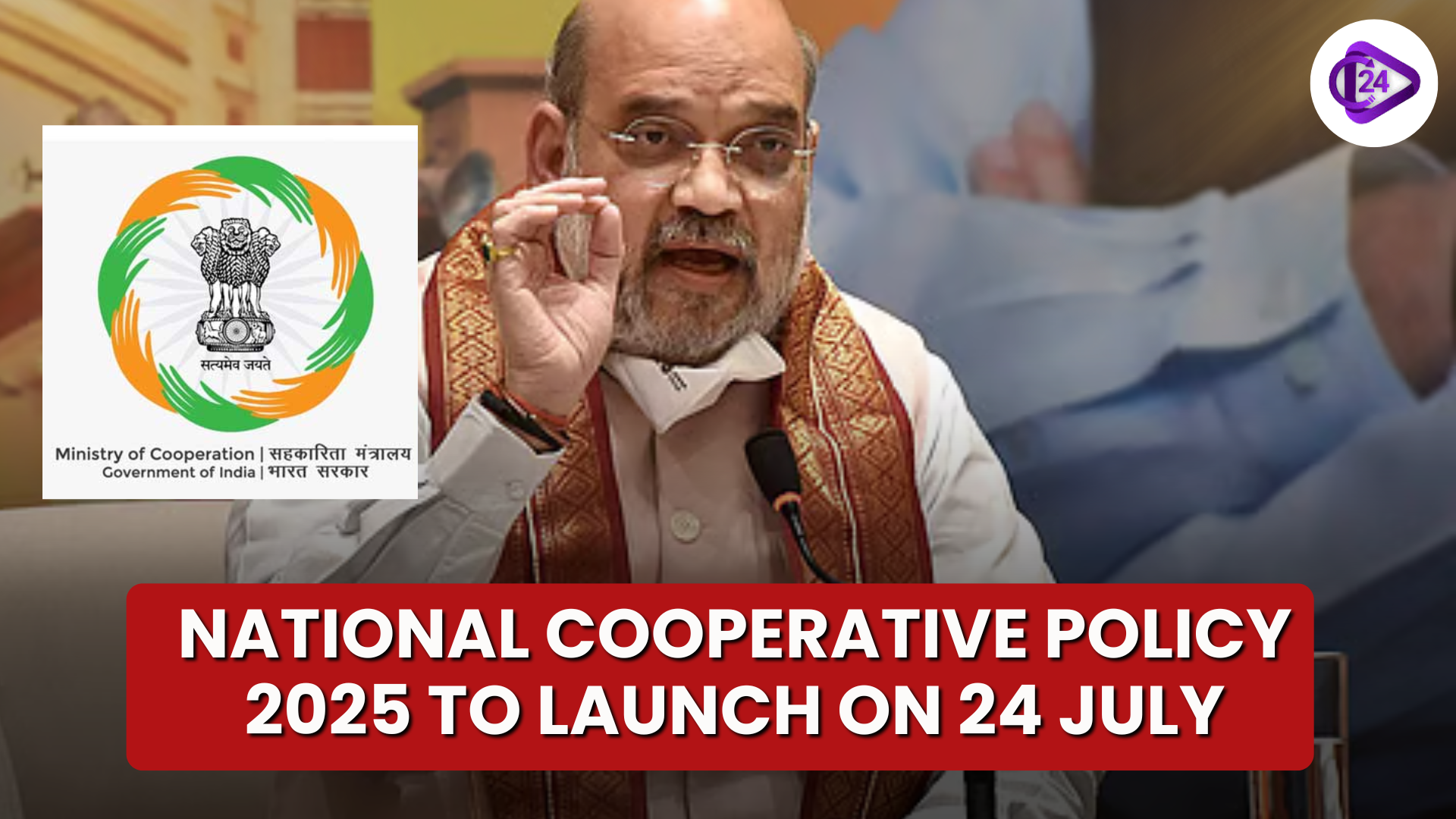
National Cooperative Policy 2025 shall be launched by Union Home and Cooperation Minister Amit Shah on 24 July 2025 at Atal Akshay Urja Bhawan, New Delhi. It is a policy report drafted by the committee of 48 members whose chairman is Suresh Prabhu and envisioning modernization of the cooperative sector in India between 2025 and 2045. It qualifies with the vision of PM Modi of Sahkar se Samriddhi and it will help make rural India a little more inclusive with professional management and job creation. This new policy supersedes the first cooperative policy of 2002 which was based on the extent of changes caused by globalization and technology. What is sought is to place cooperatives as an instrument of serious consideration towards achieving Viksit Bharat by 2047.
Context
-
The initial National Cooperative Policy was initiated in the year 2002 in India.
-
The world and the country have since undergone drastic changes in their global and domestic fronts, and hence the need for a new roadmap.
-
Now the cooperative sector requires revival, innovation, and grassroot involvement to carry the vision of national development referred to as Viksit Bharat@2047.
Key Points of National Cooperative Policy 2025
Launching Details
-
Unveiled by Union Home and Cooperation Minister Amit Shah
-
Date & venue: 24 July 2025, Atal Akshay Urja Bhawan, New Delhi
-
Names of organisations involved: NCDC, NCCT, VAMNICOM, cooperative unions and ministry officials
Policy goals
-
Rebuild and modernize the cooperative sector of India.
-
Develop a grassroot development roadmap.
-
Realize the dream of the PM Modi of “Sahkar se Samriddhi” (Prosperity through Cooperation).
-
Ensure that cooperatives are inclusive, and professionally run and future oriented.
-
Create mass jobs and livelihood particularly in rural India.
Policy Timeline and Vision
|
Feature |
Detail |
|
Coverage Period |
2025 to 2045 |
|
Long-term National Vision |
Contributing to Viksit Bharat 2047 |
|
Predecessor |
First Policy in 2002 |
|
Guiding Framework |
Inclusive, participatory, future-oriented |
Doing the Committee and the Consultations
-
Chaired by: Suresh Prabhu, ex Union Minister
-
Members: 48, of which representatives of:
-
National/State cooperative federations
-
Central and States Government Ministries
-
Joint societies in the industries
-
Stakeholders and academicians
-
Number of meetings held: 17 national and 4 regional workshops:
-
Ahmedabad, Bengaluru, Gurugram and Patna
-
Stakeholder involvement: 648 ideas are considered based on the feedback of the population
Relationship to Rural and Cooperative Development
-
Rew right Dividends to Rural India
-
Agricultural, dairy, and allied employment and livelihood boost
-
Emphasis should be on bottom up planning and inclusion of finances
-
Development of infrastructure by collaborative institutions
Contribution in Viksit Bharat 2047
-
Enhances community practices of economic development
-
Improves collaborative involvement in such sectors as digital economy, green energy, rural supply chains
-
Aspires to set cooperatives as a contributor to the target of the Indian economy to achieve $5 trillion.
Comparative Snapshot: 2002 vs 2025 Policy
|
Aspect |
2002 Policy |
2025 Policy |
|
Focus |
Management framework |
Transformation, growth & Viksit Bharat 2047 |
|
Approach |
Basic structure |
Participatory, inclusive, and grassroots |
|
Policy Environment |
Pre-globalisation adjustments |
Post-globalisation, tech-enabled cooperatives |
|
Public Consultation |
Limited |
648 suggestions from stakeholders |
Conclusion
The National Cooperative Policy 2025 has become the turning point in the history of the cooperative movement in India. It has been tasked to streamline the sector with a contemporary, encompassing, and job-focused plan that suits the country's ambitions. It will make an immense contribution to turning into a Viksit Bharat by 2047 by empowering cooperatives at the grassroot.



 Donald Trump Receives First FIFA Peace Prize
Donald Trump Receives First FIFA Peace Prize International Civil Aviation Day 2025 – Everything About the History, Theme and Its Importance
International Civil Aviation Day 2025 – Everything About the History, Theme and Its Importance Netflix to buy Warner Bros Discovery's Studios, Streaming Unit for $72 Billion
Netflix to buy Warner Bros Discovery's Studios, Streaming Unit for $72 Billion Russia to Join India-led International Big Cat Alliance
Russia to Join India-led International Big Cat Alliance India, Maldives Begin 14th Edition of Exercise Ekuverin 2025
India, Maldives Begin 14th Edition of Exercise Ekuverin 2025 World AIDS Day 2025
World AIDS Day 2025 Riyadh Metro Breaks Guinness World Record as Longest Driverless Metro Network
Riyadh Metro Breaks Guinness World Record as Longest Driverless Metro Network Vietnamese Film ‘Skin of Youth’ Bags Golden Peacock Award
Vietnamese Film ‘Skin of Youth’ Bags Golden Peacock Award India Launches Operation Sagar Bandhu to Support Sri Lanka After Cyclone Ditwah
India Launches Operation Sagar Bandhu to Support Sri Lanka After Cyclone Ditwah Jakarta Becomes World’s Most Populous City In 2025
Jakarta Becomes World’s Most Populous City In 2025






